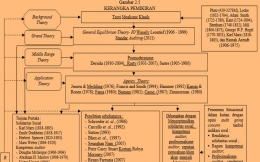Beatty dan Ritter, (1986:22) ;1994., “Extraordinary Items and Income Smoothing : A Positive Accounting Approach”., Journal of Business and Accounting Vol. 21 No. 6. P.711-728
Beaver, William., John W. Kennelly and William M. Vos., 1986., “Predictive Ability as on Criteria for Evaluation of Accounting Data”,. The Accounting Review (October)., p. 765-683.
Bedard dan Michelene (1993)., 1996., What Motivates Managers Choice of Discretionary Accruals?., Journal of Accounting and Economics.,p., 313-325.
Bhen et al., (1997., “Firms-size and the Predictive Ability Of Quartly Earning Data”, Accounting Review Vol. LXIV, (January) p. 49-68.
Beidleman, Richard., 1973., “Income Smoothing: The Role of Management”, Accountung Review (October),. P.653-667.
Borneo, Amir., Joshua Ronan and Simcha Sadan., 1976., “Classificatiory Smoothing of Income With Extraordinary Items”, The Accounting Review (January), p. 110-122.
Bowen, Noren and Lacey., 1981., Determinants of The Corporate Decision to Capitalize Interest., Journal of Accounting and Economics., p. 151-179.
Bowen, Robert., Larry Ducharme and David Shores.,1995., Stakeholders Implicit Claims and Accounting Method Choice., Journal of Accounting and Economics., p. 255-295.
Burgstahler, David and Ilia Dichev, 1997., Earnings management To Avoid Earnings Decreases And Losses., Journal of Accounting and Economics., p. 99-126.
Bushman, Robert., Raffi Indjejikian and Abbie Smith., 1996., CEO Compensation: The Role of Individual Performance Evaluation., Journal of Accounting and Economics.p. 161-193.
Christiawan, Y.J. (2002). Kompetensi dan independensi akuntan publik: refleksi hasil penelitian empiris. Journal Directory : Kumpulan Jurnal Akuntansi dan Keuangan Unika Petra. Volume 4 (02)








